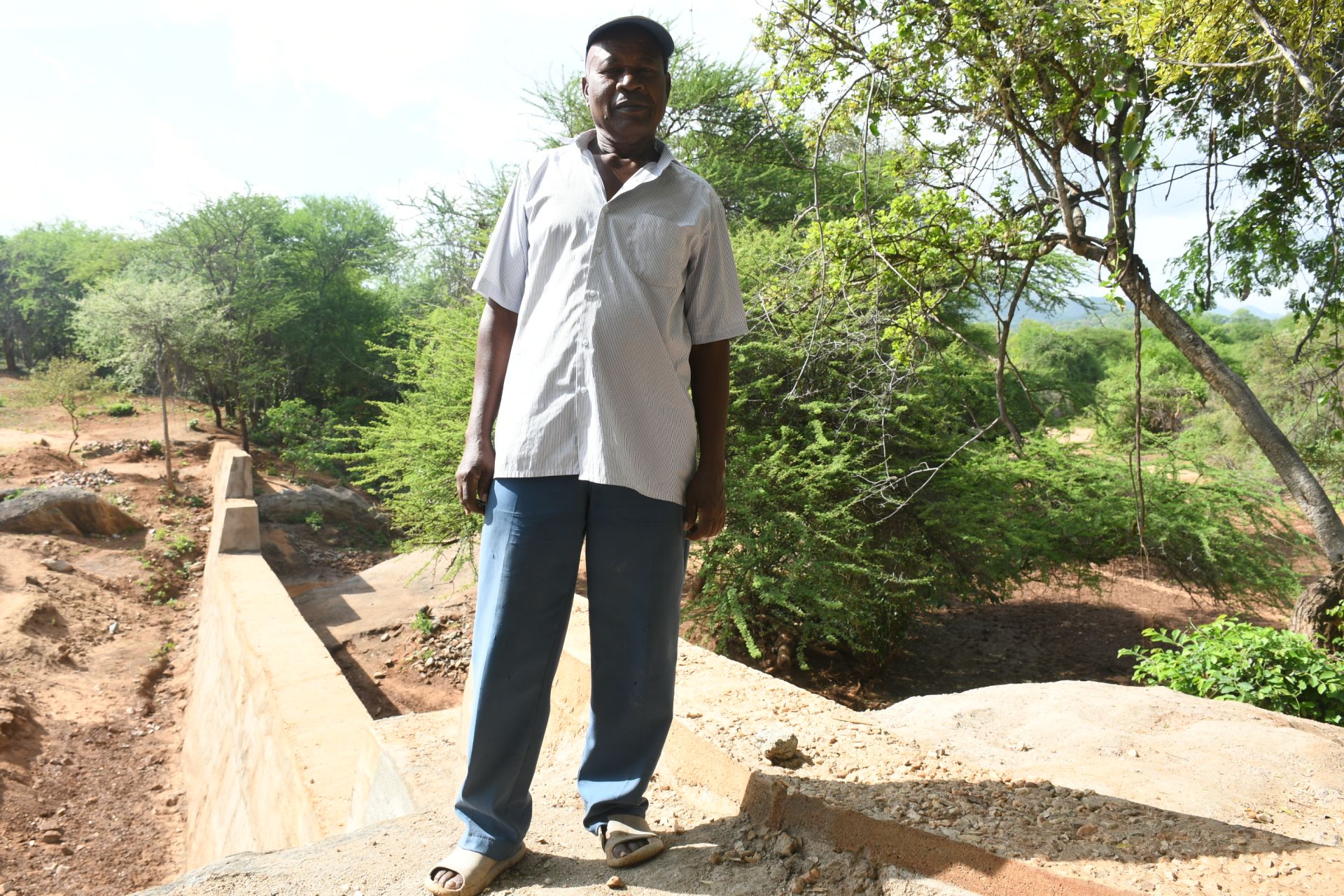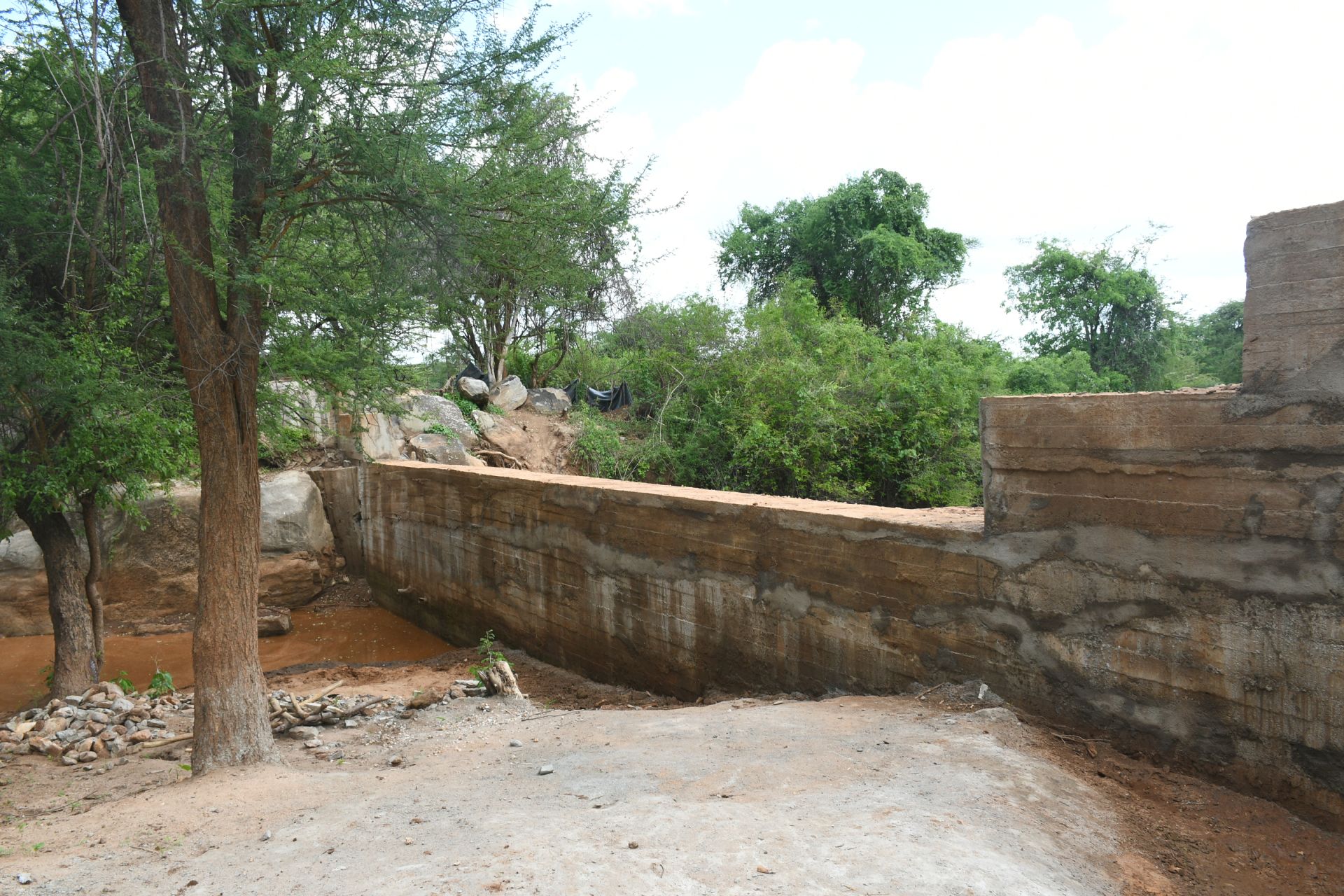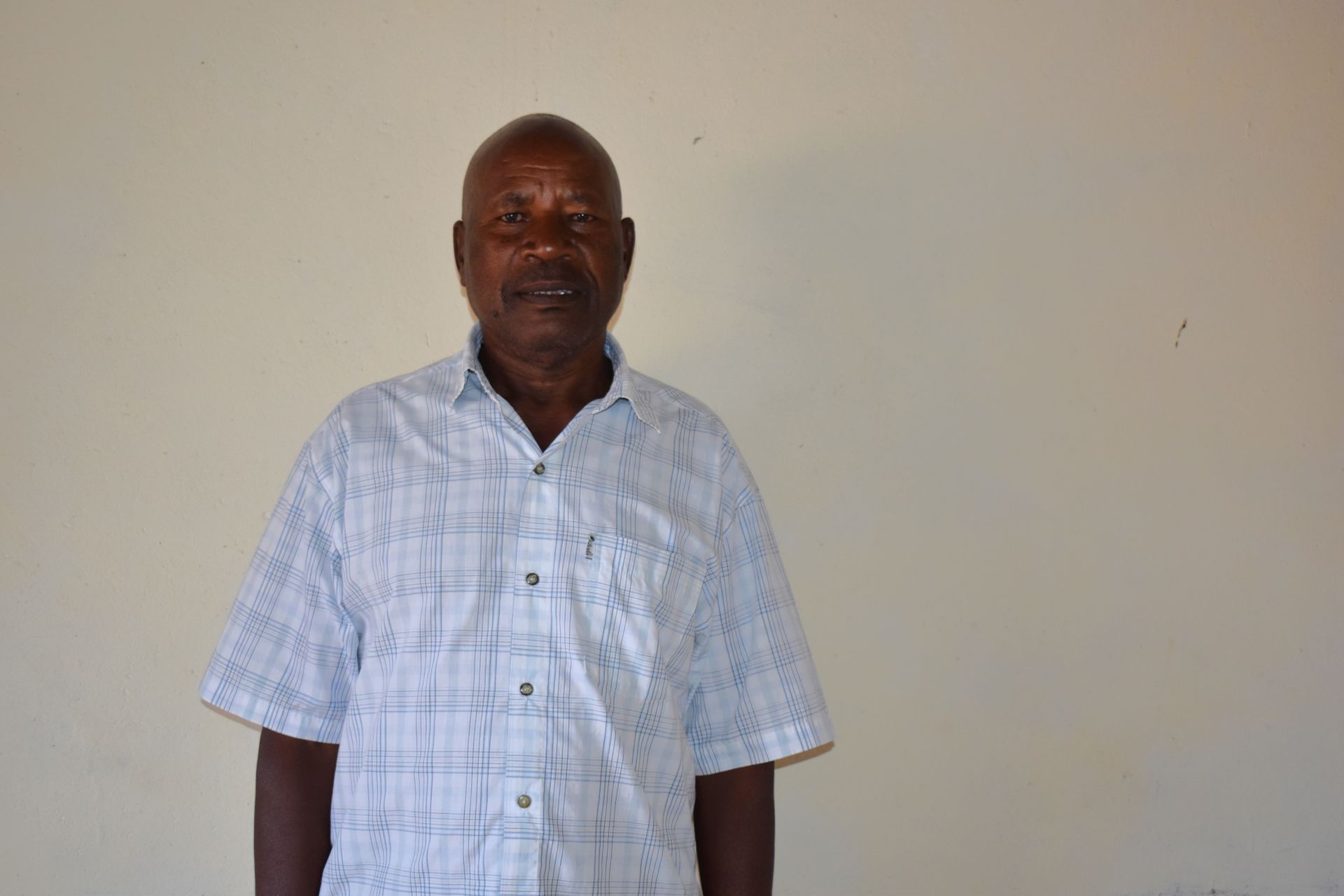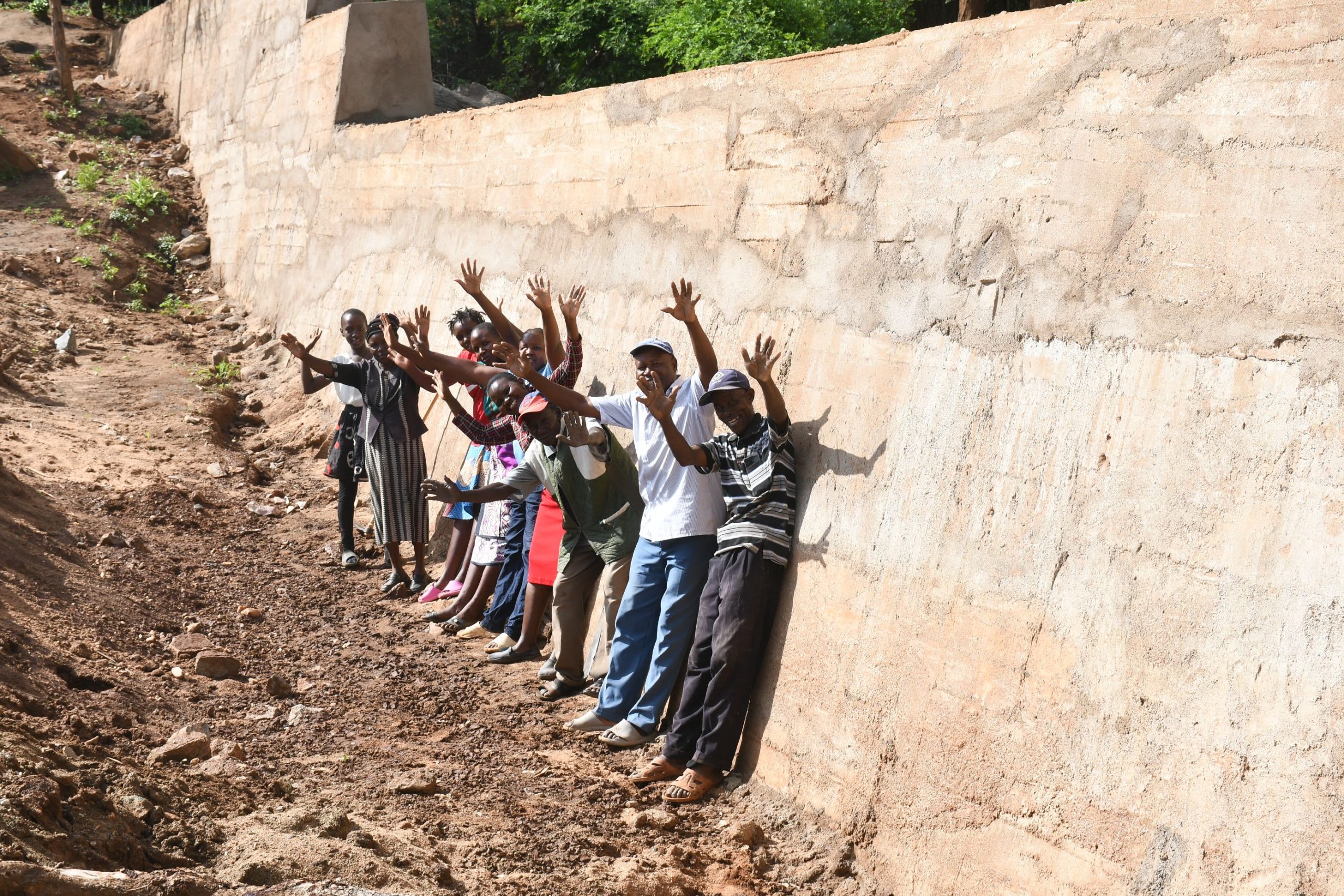In the Ndakoni Community there are 3,000 people facing a water crisis. Their only source of water is a scoop hole. Scoop holes are dug down into the earth in hopes of finding water. These sources are often contaminated, dangerous, and difficult to access.

The community at the scoop hole.
"Scoop holes easily become contaminated with pathogens, including bacteria, viruses, and parasites from animal waste, runoff, and human activity. This has led to gastrointestinal illnesses. Frequent illnesses due to contaminated water have led to malnutrition, as individuals are unable to absorb nutrients effectively and lose their appetite when ill. Ongoing health issues have led to higher medical expenses for families and strained local healthcare resources," shared Field Officer Alex Koech.

With no safe choice, the entire community puts their health at risk every day, trying to meet their basic needs.
Due to the semi-arid region they live in, the community of Ndakoni suffers from drought often, making collecting water as time-consuming as it is unsafe.

The scoop hole.
65-year-old farmer Patrick Ngungu shared his experience: "We can even wait for about 2 hours to draw water from the scoop hole because the water supply reduces like last year. There are many people who depend on this waterpoint."

Mr. Patrick Ngungu.
Mr. Ngungu spends so much of his day travelling to and waiting to collect water that he doesn't have enough time to work his farm. As that is his livelihood and food source, it severely affects his family's wellness. He shared that he often spends upwards of four hours a day to collect water. He has little time for any other life-crucial task.
Implementing a sand dam is the first step towards water security in this community.
Field Officer Alex Koech said, "Sand dams capture and store rainwater, allowing the community to access water during dry periods, reducing reliance on open scoop holes. Access to clean water will reduce the incidence of waterborne diseases, leading to better overall health for community members and lowering medical expenses. The sand stored in the dam will filter water as it percolates through, providing a more sustainable and reliable water supply."

With accessible water Mr. Ngungu can care for his livestock and farm, which means he can better provide for his family. "Water is very crucial for me because my cattle need water to drink, and I also need water to cook, improve hygiene, and conduct farming," Mr. Ngungu concluded.
Solving the water crisis in this community will require a multifaceted system that will work together to create a sustainable water source that will serve this community for years to come.
Steps Toward a Solution
Our technical experts worked with the local community to identify the most effective solution to their water crisis. Together, they decided to construct a sand dam and dug well.
Sand Dam
Sand dams are sought-after, climate-smart, and lasting water solutions providing hope and resilience to communities in arid Southeastern Kenya. Think of them like giant sandboxes constructed in seasonal rivers that would typically quickly dry up after the rainy season. Instead of holding water like traditional dams, they collect sand and silt.
When infrequent rains do come, these dams catch a percentage of the river's flow, letting most of the water continue downstream to other communities. But here's the magic: the sand they collect acts like a natural filter, holding onto water long after the river's gone dry. Then, wells are constructed nearby, creating a reliable water source even during the driest times.
And the benefits don't stop there! In communities impacted by climate change, sand dams replenish groundwater and prevent soil erosion. Even during severe droughts, the consistent water supply from these sand dams allows farmers to thrive, giving way for enough food not only for their families but also to sell in local markets.
The most remarkable aspect of sand dams is how they involve the local community every step of the way, giving them a sense of ownership and pride in solving their own water shortage and managing their own water resources.
This sand dam will be connected to a dug well to make the water more accessible.
Community Education & Ownership
Hygiene and sanitation training are integral to our water projects. Training is tailored to each community's specific needs and includes key topics such as proper water handling, improved hygiene practices, disease transmission prevention, and care of the new water point. Safe water and improved hygiene habits foster a healthier future for everyone in the community. Encouraged and supported by the guidance of our team, a water user committee representative of the community's diverse members assumes responsibility for maintaining the water point, often gathering fees to ensure its upkeep.

 Sand Dam
Sand Dam
 Rehabilitation Project
Rehabilitation Project




























